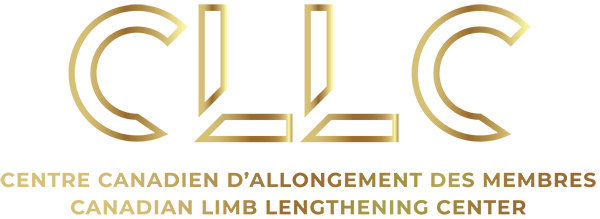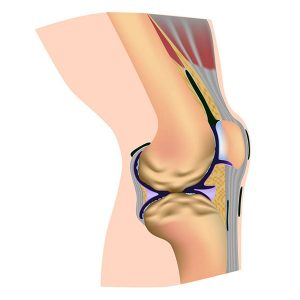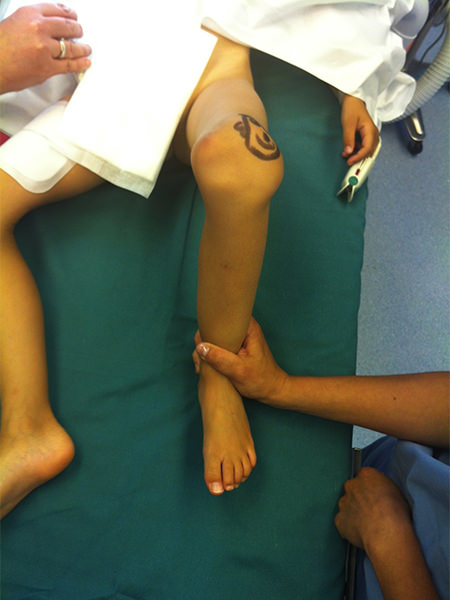Knee ankylosis can vary in severity but to have functional range, patients need to be able to bend their knee more than 90 degrees. Knee ankylosis can have many underlying causes but eventually results in the contracture of the quadriceps muscle. Therefore, to be able regain range of motion, the quadriceps muscle needs to be released from its origin at the top of the femur. The Judet Quadricepsplasty technique involves releasing the knee and quadricep muscles in order to improve range of motion and function. This release is usually preformed from the knee, up the leg, along the entire femur on the anterior side all the way up to the hip joint.
Indications / Candidacy
Knee ankylosis is stiffness of the joint as a result of injury or disease. Patients with this condition may find that their pain and discomfort is worse in the morning and more intense after periods of inactivity. This can also cause compensatory pains in other joints, as the knee does not bend properly for function. In children, this can be used to treat underlying congenital or habitual patella problems. Judet quadricepsplasty has the advantage of achieving better range of motion, maintaining better strength in the leg and having less complications than other types of quadriceplasties.
Good Candidates for Judet Quadricepsplasty may have:
- Minimal range of motion at the knee joint
- Diagnosed ankylosis
- Pain and discomfort at the knee and surrounding areas
- Limited function due to joint stiffness and range of motion
- Limited function at the knee after trauma, injury, or illness
- Previous fractures of the distal femur
- Congenital knee problems or patellar instability


Treated Conditions
The Canadian Limb Lengthening Center offers a team of experienced surgeons, nurses and physiotherapists that make patients feel supported throughout their entire treatment process. Our ability to treat complex orthopedic conditions with a holistic approach gives our patients the best possible outcomes. We pride ourselves in providing highly specialized, expert care. To learn more about Knee ankylosis follow the link below:
Surgical Technique
Patients require an epidural anaesthesia for this procedure as they will require the use of a continuous passive motion (CPM) machine immediately post-operatively.
- A long curvilinear incision is made starting from the patellar tendon and then curving to the lateral side of the leg all the way up to the hip.
- The patella and surrounding tissue are freed allowing the patella to be lifted off the femoral condyles
- Intra-articular release of adhesions surrounding the knee joint is performed
- Release of fibrous tissue (thickened or scarred tissue) affecting the quadricep muscles is then performed in a very careful manner, sequentially going up the leg as needed, making sure to stay above the periosteal layer of the bone.
- Care is taken to protect the femoral nerve as the approach goes higher towards the hip
- Once the quadriceps muscle is entirely lifted off the femur anteriorly, the vastus lateralis and rectus are released from their origin which allows the entire quadriceps muscles to slide down the bone.
- This usually allows the knee to bend fully and range of motion is restored
- Drains are placed and the incision is closed
- The patient is placed immediately in a CPM (continuous passive motion) machine to keep the knee moving from 0-120 degrees for 3-5days (23/24hrs a day)

Results
As a result of undergoing Judet Quadricepsplasty surgery, patients have improved flexion at the knee joint. This is true of patients who experience severely ankylosed knees as well. With minimum impairment of quadriceps function Judet quadricepsplasty successfully increases range of motion. With this, we see improvements in gait function, and decreased pain and discomfort in other joints as well. Patients report increased satisfaction during occupational and leisure activities, which improves their quality of life and confidence.
Preop ROM
6 months follow up
Potential Complications
As with any surgical procedure, Judet Quadricepsplasty can have difficulties and complications. In most cases, our team of specialists can address these concerns without compromising the end results or outcome. Complications and side effects may include:
- Infection
- wound healing problems (including seromas)
- Damage to nearby nerves
- Blood clot
- Loss of range of motion over time
- Muscle weakness
AM I A CANDIDATE?
Are you experiencing an orthopedic condition and would like to improve your physical capabilities?
Or you simply would like to achieve your long-lasting dream of improving your height?
Let us help you achieve your optimal health and wellness in a professional setting.
Let’s open up a discussion to help you achieve your goals.




Highly specialized expert care at CLLC
At the Canadian Limb Lengthening Centre we offer complex deformity correction and limb lengthening surgeries performed by experienced surgeons with the most up to date technologies. When it comes to your care, and treatment of deformity and limb length discrepancy, our surgeons have extensive training and experience.






